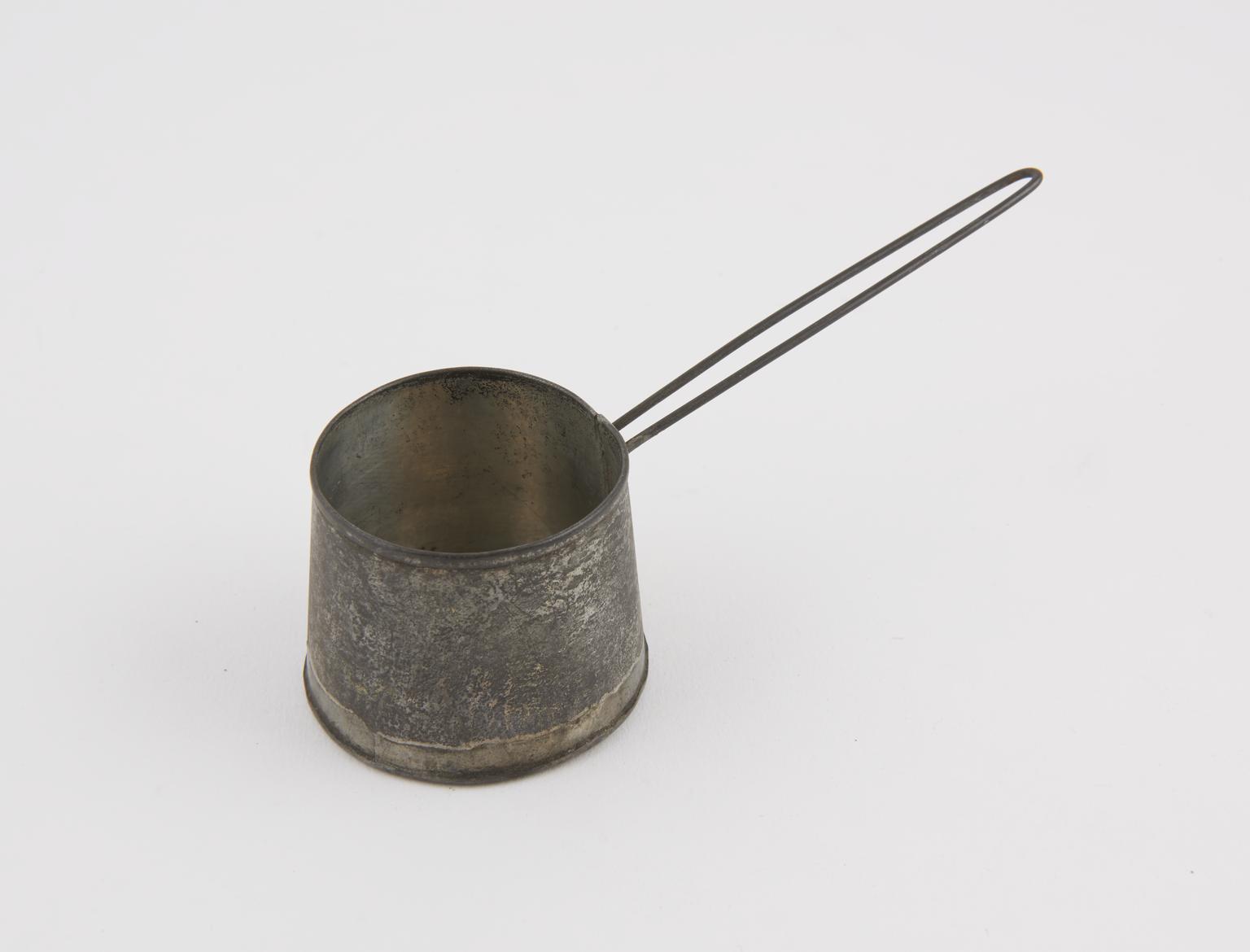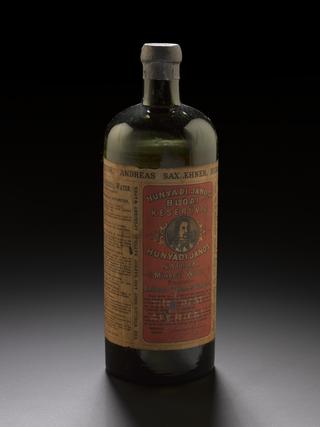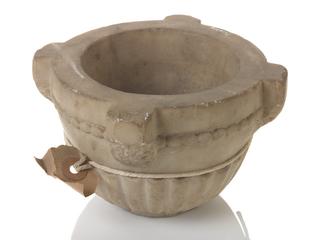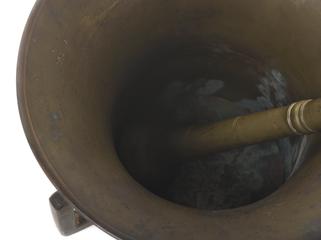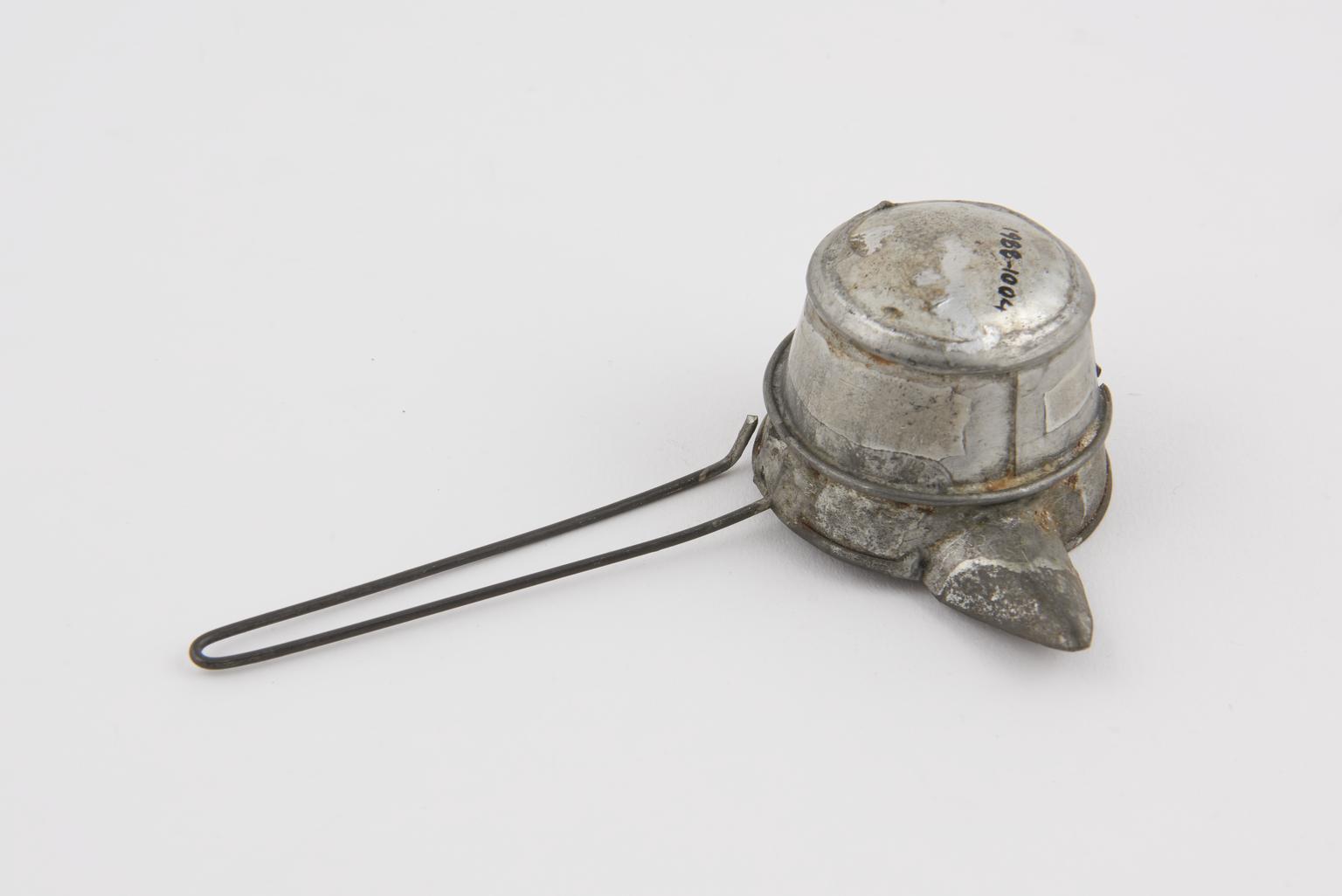
Pouring vessel from water bath, 1850-1900
Pouring vessel with handle, part of small metal water bath comprising bath and pouring vessel, English, 1850-1900
More
This pourer is part of a water bath which would have been used by late nineteenth and early twentieth century pharmacists when making suppositories or pessaries. Suppositories and pessaries where a popular way of administering medicine in the Victorian period, particularly for conditions like constipation. Pessaries and suppositories were made up of a base that melted at body temperature and which was mixed with the medicinal ingredients. This water bath would have been used to melt the base, often cocoa butter, before it was mixed with the necessary ingredients and poured into a mould to set into the correct shape.
